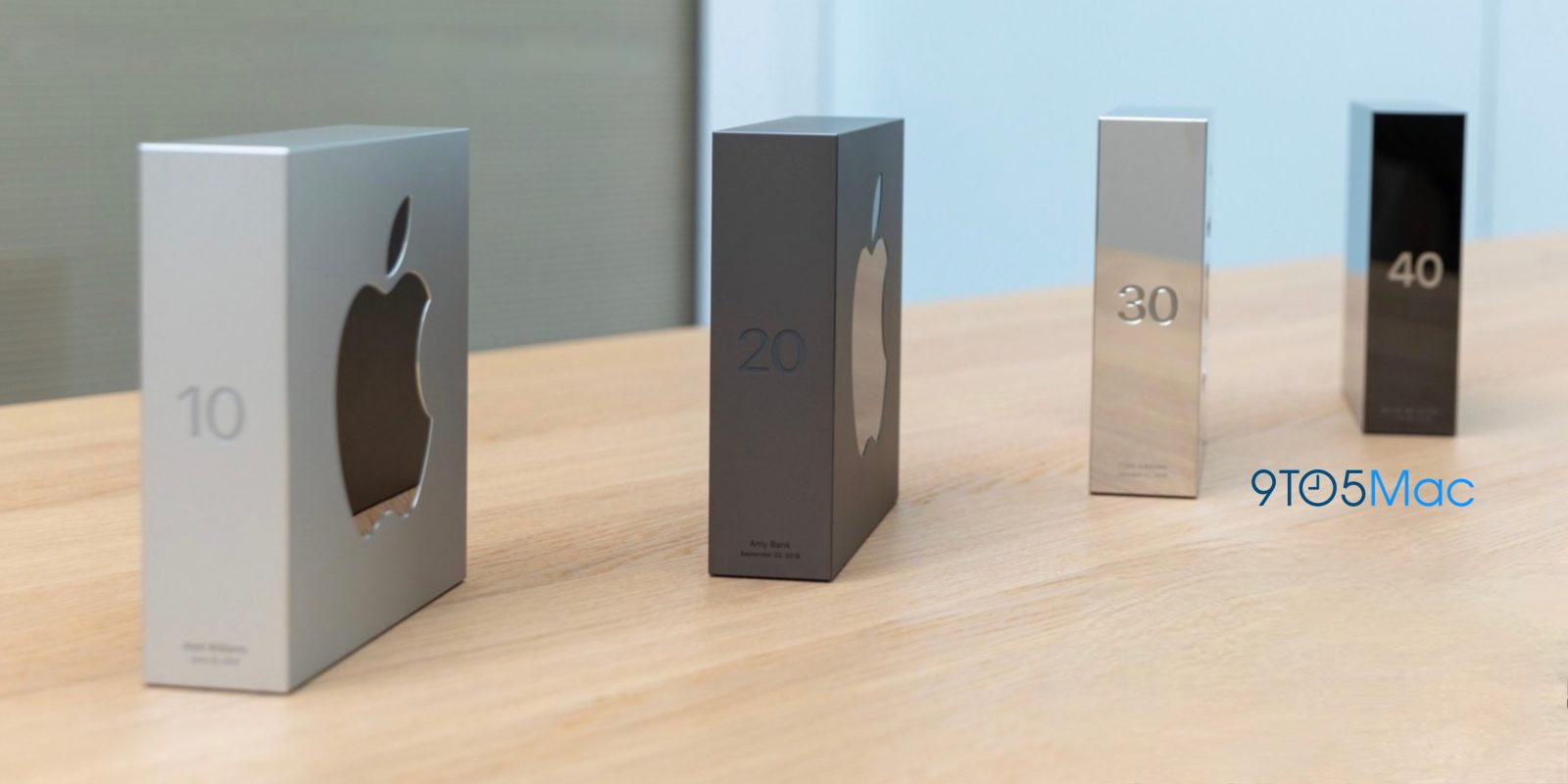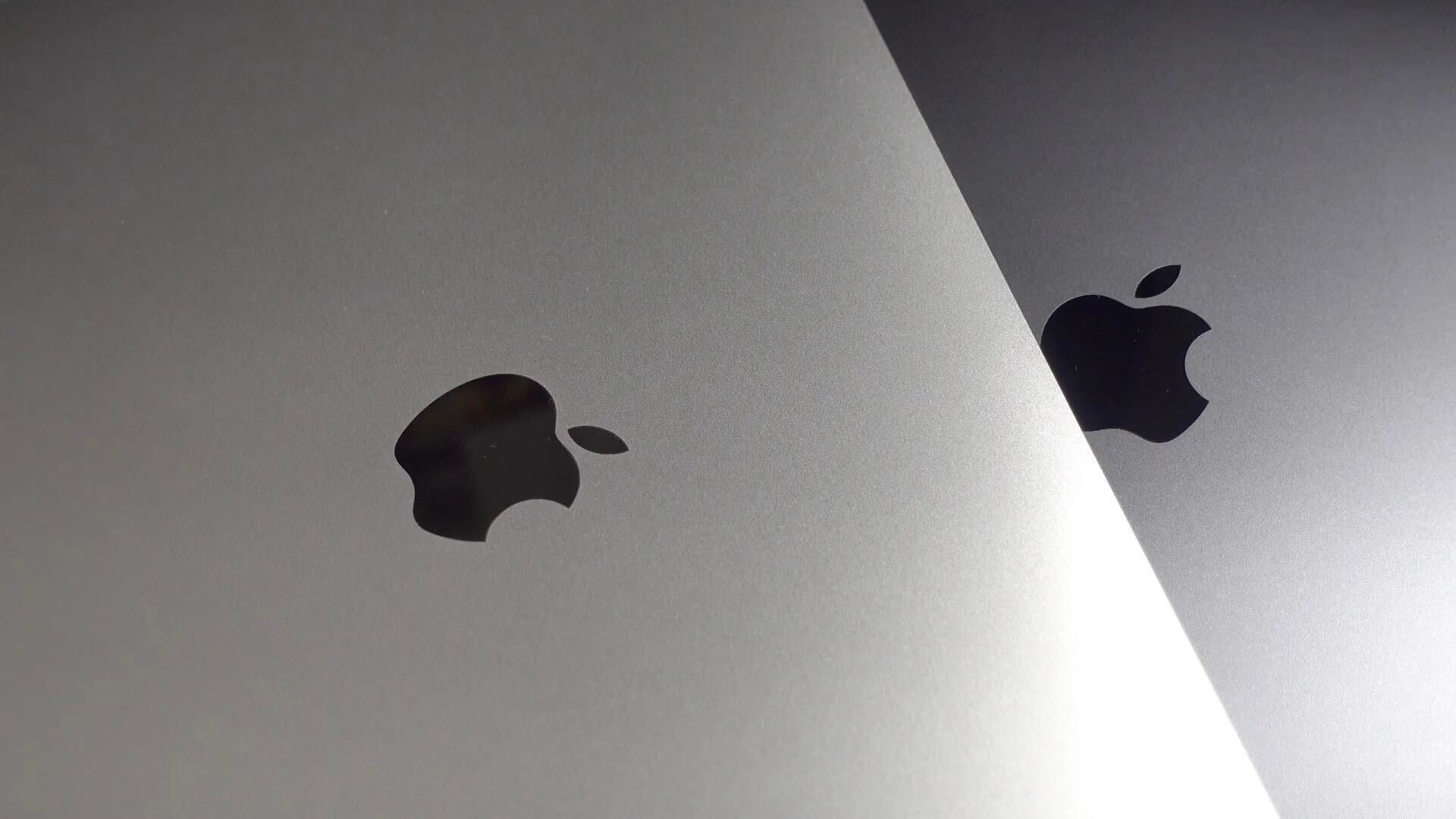A brief overview of Apple’s Anniversary Awards program reveals a carefully evolved celebration of loyalty and contribution. Since its inception, the program has recognized long-tenured employees across milestone years—10, 20, 30, and 40—through distinctive, high-end awards. The latest designs, introduced in 2019, mark a shift from crystal to aluminum and stainless steel, aligning with Apple’s broader emphasis on sustainability and product consistency. Over the years, Apple has highlighted the awards as a meaningful way to acknowledge the heart and soul employees bring to the company and to emphasize that extraordinary milestones deserve extraordinary recognition. New details surfaced this week as images and production notes emerged, offering a comprehensive look at the design, production, and packaging processes behind these revered tokens of appreciation.
Apple’s Anniversary Awards: History, purpose, and milestone milestones
Apple’s Anniversary Awards program serves to honor employees at significant points in their tenure, beginning with 10-year anniversaries and extending to 20, 30, and 40 years. The concept was officially introduced at an all-hands meeting in 2018, when Apple emphasized that “extraordinary milestones deserve extraordinary awards.” During that meeting, Apple vice president Deirdre O’Brien spoke about the company’s culture of dedication, noting that every day at Apple involves people pouring heart and soul into their work. She expressed gratitude for employees’ long-term contributions and highlighted that the organization is fortunate to have special awards to recognize this level of commitment.
One notable turning point in the program’s evolution was the decision to switch from crystal—the original material for the awards—to alternative metals. Apple explained that the crystal design held a “very special place in our company history,” but the shift to aluminum and stainless steel was framed as an “evolution as we move forward.” The company indicated that the new materials better reflect its current engineering, manufacturing practices, and environmental considerations while preserving the prestige and ceremonial feel of the awards.
The design distinctions between the different milestone awards are clear. The 10-year and 20-year designs use aluminum, while the 30-year and 40-year designs are crafted from stainless steel. This material separation is not just a stylistic choice; it also informs the production process, weight considerations, and finishing techniques used for each award. Apple stresses that the awards are more than symbols—they are crafted with the same meticulous attention to detail that characterizes Apple products, underscoring the company’s commitment to quality, consistency, and environmental stewardship.
From the outset, Apple framed the production process around sustainability. The awards begin as remnants from the company’s own manufacturing processes, employing the same metals and colors that appear in Apple products. These remnants are collected and reprocessed into custom alloys, which are then cast into long ingots and sliced into blocks that are machined to final specifications. The aluminum awards feature a surface treatment that includes polishing, blasting, and a specialized anodizing process, while the stainless steel awards undergo a meticulous lapping to achieve a mirror-like finish. The finishing touches include chamfered edges that are diamond-cut, and the stainless steel logo is also lapped to a mirror finish and placed in a precisely machined pocket on the award.
Each award bears the recipient’s name laser-etched on the right side, alongside the anniversary date. This personalization is a key element of the program, reinforcing the sense of individual achievement within Apple’s broader corporate narrative. The 2019 refresh marked a comprehensive redesign and reengineering effort that extended well beyond mere appearance; it encompassed the production workflow, the choice of materials, and the packaging approach.
The 2019 redesign was not a quick makeover. Apple designers and engineers had been working on the new award concepts for more than two years before shipping began. The collaboration spanned multiple disciplines—Industrial Design, Manufacturing Design, Operations, Logistics, Packaging Product Design, Packaging Engineering, Project Management, and more. The scope of collaboration reflects Apple’s practice of cross-functional teamwork when introducing significant product or program changes. The awards’ creation required coordination among dozens of entities within Apple, including departments focused on Marcom, People, Finance, Communications, Legal, Procurement, and Facilities. This level of coordination highlights how a seemingly ceremonial object is deeply embedded in the company’s operational and strategic framework.
The production process is described as a highly structured sequence of steps, with the end result designed to embody Apple’s commitment to precision and quality. The process begins with repurposing production remnants, which ensures that the same metals and colors used in Apple products are preserved in the awards. Through a careful recycling and alloying sequence, the company produces material blocks that are then cast into long ingots. These ingots are subsequently sliced into blocks, machined to the finished size, and given their distinct surface finishes. The aluminum variants are treated with polishing, blasting, and a specialized anodizing process, while the stainless steel variants are finished with a mirrored appearance through meticulous lapping.
In addition to the structural design, the production process includes precise edging and in-pocket logo placement. The chamfered edges of the stainless steel awards are diamond-cut, and the stainless steel logo itself is lapped to a mirror finish and installed in a precisely machined pocket within the award. The personalization step—a laser etching of each recipient’s name and the anniversary date—occurs on the side of the award. These details collectively reflect Apple’s commitment to a consistent, high-quality user experience and to a product for which every element has been considered and perfected.
For context, Apple’s stated timelines place the distribution of the new designs beginning in 2019. The company emphasizes that the redesign and production refinement required collaboration across numerous teams and a sustained investment of time and expertise. The development and production effort, the company implies, reflects Apple’s broader approach to product design: a blend of aesthetic refinement, functional durability, sustainability, and an emphasis on brand cohesion across the company’s hardware family. The 2019 launch thus represented not only a new look and new materials, but a reaffirmation of Apple’s standards for craftsmanship and environmental responsibility.
A closer look at what each tier represents also reveals a consistent symbolic language. The 10-year and 20-year awards—aluminum—signal a lighter, more contemporary feel while retaining the emblematic Apple aesthetic. The 30-year and 40-year awards—stainless steel—convey enduring strength and permanence, aligning with the longer service milestones those employees have reached. The design language, including a polished surface on aluminum and a mirror-finished surface on stainless steel, reinforces Apple’s brand ethos: products that combine beauty with durability, crafted with technical excellence and a focus on sustainability.
Five-year anniversaries get a special nod within Apple’s recognition framework: a framed plaque signed by Tim Cook. While this particular recognition sits outside the four primary milestone designs, it highlights Apple’s broader culture of employee appreciation and its commitment to honoring long-term contributions at multiple levels.
Design, materials, and surface finishes: what makes each award distinctive
The materials chosen for the Anniversary Awards are central to both their visual identity and their tactile experience. The aluminum awards—the 10-year and 20-year designs—are derived from recycled aluminum, consistent with Apple’s aim to reuse and repurpose the same metals that appear in its widely used devices, such as the Mac mini and MacBook Air. Apple describes these metal blocks as monolithic, cast in sizable ingots (12-foot lengths in the original description) before being sliced into workable blocks for milling and finishing. This approach allows the final product to reflect the same material lineage as Apple’s consumer electronics, reinforcing a brand narrative that connects employees’ dedication with the company’s product philosophy.
For the aluminum awards, the finishing process includes surface treatments designed to provide a distinct tactile and visual character. The surfaces are polished and blasted, followed by anodizing—a step that not only enhances corrosion resistance but also contributes to the depth and uniformity of color. The anodized aluminum awards thus carry a consistent look that aligns with Apple’s jewelry-like, premium aesthetic. The 10- and 20-year designs benefit from this surface treatment, which helps both the visual appeal and the durability of the awards when displayed in offices or homes over many years.
The 30-year and 40-year awards shift to stainless steel, a material that inherently carries weight and permanence. The stainless steel surfaces are produced through a meticulous lapping process that yields a high-gloss, mirror-like finish. The lapping step is careful and precise, reflecting Apple’s insistence on finish quality that can withstand long-term viewing and handling. The stainless steel’s surface and structural integrity are appropriate for the deeper symbolic significance of these higher milestones, where longevity and resilience are emphasized.
In addition to the core materials and finishes, the awards incorporate distinctive edge work and logo treatment. The chamfered edges of the stainless steel awards are diamond-cut, a high-precision technique that delivers a clean, sharp profile. The logo on the stainless steel awards is also lapped to a mirror finish, then positioned in a precisely machined pocket, ensuring the logo is flush and integrated into the overall form. The aluminum awards, while not requiring the same edge-cutting process as stainless steel, still undergo a robust finishing regimen to achieve a refined and consistent look across the entire line.
Each award’s personalization—laser-etching the recipient’s name on the side of the award along with the anniversary date—adds a level of individuality that complements the uniformity of the design. The laser-etching process is precise, ensuring legibility and long-term durability of the engraved text even after years of display. The combination of material choice, surface finishing, edge treatment, and laser-etched personalization creates a set of awards that are simultaneously visually striking and deeply meaningful to the recipients.
Packaging considerations are an essential part of preserving the awards’ appearance and ensuring safe delivery. For the 10- and 20-year awards, Apple uses an all-fiber-based packaging system, including the wraps and the box structure. This approach aligns with Apple’s broader sustainability goals, reducing reliance on plastic components and enhancing recyclability and end-of-life handling for the packaging. Conversely, for the 30- and 40-year awards, which feature a highly polished surface, Apple includes a microfiber cloth in the packaging. The microfiber cloth serves to help the recipient keep the award clean and free of fingerprints, dust, and smudges that could mar the mirror-like finish. This packaging choice reflects a practical response to the care required for the more highly polished finishes in the higher milestone awards, and it demonstrates Apple’s attention to the user experience beyond the initial unboxing.
The production approach emphasizes weight management and structural integrity. The 30-year and 40-year awards are described as solid blocks of stainless steel, but their design incorporates a material-saving technique to keep weight reasonable for handling and display. Specifically, the 30-year award’s weight was reduced from what would happen if it were truly solid stainless steel. The actual manufacturing approach uses two halves that are welded together and then precisely lapped to achieve the final, seamless appearance. This method significantly reduces weight while preserving the desired weighty feel and optical quality. The 40-year award follows a similar logic, with its top and bottom joined seamlessly after a special color coating process, maintaining a cohesive look on both ends while ensuring a robust finish.
The production sequence for each award involves a substantial number of steps—roughly 25 to 30, not counting fulfillment and packaging. This high-step count underscores how many precise operations are required to transform raw remnants into a finished, display-ready award. The embellishment of text and logos, the careful assembly of components, the finishing touches on edges and surfaces, and the precise laser etching of names and dates all contribute to the complexity and quality of the final product. The claim that this is not merely a decorative piece but a carefully engineered artifact of recognition speaks to Apple’s philosophy of honoring employees with objects that are as meticulously crafted as Apple’s devices.
In terms of the design lineage, the awards’ evolution reflects a balance between tradition and modernization. The original crystal-based design represented a long-standing Apple tradition, but the switch to aluminum and stainless steel aligns better with the company’s contemporary manufacturing capabilities and its environmental objectives. The 2018 announcement and subsequent 2019 shipping marked a turning point that reinforced Apple’s identity as a company that values both heritage and forward-looking innovation. The awards’ design language—clean lines, precise edges, and a reflective surface—embodies a modern, premium aesthetic that complements Apple’s broader design language across products and experiences.
Production process: sustainability, collaboration, and practical manufacturing details
The production process behind the Anniversary Awards is a carefully choreographed sequence that integrates environmental stewardship with high-precision manufacturing. Apple emphasizes that the process starts with remnants from its own production cycles, using the same metals and color families that appear in the company’s devices. This approach minimizes raw material waste and reinforces a closed-loop mindset, resonating with Apple’s overall sustainability messaging. By recycling and reformulating these remnants into custom alloys, Apple creates a material loop that aligns with its broader goals of reducing environmental impact while maintaining high quality and consistency across the product line.
The alloys produced from these recycled remnants are cast into long ingots and then sliced into blocks for machining. This method ensures that the material composition remains consistent across all awards and that the final pieces meet exacting tolerances. The finishing steps for aluminum involve polishing and blasting, followed by a specialized anodizing process that enhances durability and color, while providing the characteristic aluminum finish associated with the 10-year and 20-year awards. For stainless steel, the finishing path relies on lapping to deliver the mirror-like finish that typifies the 30-year and 40-year awards. Each finish is carefully controlled to achieve a uniform appearance across the entire series, contributing to a cohesive visual identity for the program.
Edge work and logo integration are integral to the awards’ tactile experience. The diamond-cut chamfer on the stainless steel editions creates a distinct profile that catches light from multiple angles, adding depth to the award’s appearance. The logo’s mirror-like lapped finish is matched by the pocket in which it is placed—an exacting fit that preserves the surface’s reflective quality. The laser-etched name and anniversary date on the right side of each award provide a personal touch while maintaining the design’s optical balance. This combination of precise geometry, reflective finishes, and personalized text results in an artifact that is both visually striking and emotionally resonant.
The scale and logistics of manufacturing the Awards require extensive cross-functional collaboration. The process involves teams across Industrial Design, Manufacturing Design, Operations, Logistics, Packaging Product Design, Packaging Engineering, Project Management, and other departments such as Marcom, People, Finance, Communications, Legal, Procurement, and Facilities. The cross-disciplinary nature of the project ensures that production constraints, packaging requirements, branding consistency, and legal considerations are all addressed. The collaboration required to bring these awards from concept to shipment illustrates Apple’s approach to complex product development—a model of coordinated, multi-functional teamwork that underpins the company’s tradition of excellence.
The packaging strategy for the 10- and 20-year aluminum awards relies on fiber-based packaging. Apple’s rationale emphasizes environmental responsibility and the desire to minimize plastic usage in packaging. The all-fiber approach is designed to deliver protection during transit while reducing environmental impact, aligning packaging with the awards’ sustainability narrative. In contrast, the 30- and 40-year stainless steel awards, with their glossy surfaces, necessitate additional care in packaging. The inclusion of microfiber cloths helps recipients keep the award free from fingerprints and smudges, ensuring that the award remains pristine as a display piece. These packaging choices reflect a nuanced approach to protecting the awards’ finishes while aligning with the different handling and presentation needs of each design.
The weight considerations for the awards also reflect careful engineering decisions. The 30-year award, if truly solid stainless steel, would weigh about 35 pounds. To balance durability with practicality, the design employs two halves that are welded together, then lapped to create a seamless outer surface. This choice reduces weight while preserving the visual and tactile feel that accompanies a substantial, premium object. The 40-year award follows a similar pattern, with its construction incorporating a color coating process that requires the top and bottom to be joined seamlessly after finishing. These choices demonstrate how material science and manufacturing engineering intersect to deliver a product that feels substantial yet remains manageable for recipients when displayed in offices or homes.
The production journey across all four milestone designs involves roughly 25 to 30 discrete steps, not including fulfillment and packaging. Each step is a carefully executed operation designed to ensure precision, consistency, and durability. The result is an award that embodies the same level of care Apple devotes to its devices, reflecting a philosophy that a meaningful recognition item should stand up to years of display, handling, and admiration. The dedication to quality extends to the personalization process, with each recipient’s name and anniversary date laser-etched on the side, reinforcing the individual significance of the award within Apple’s broader culture of recognition.
Distribution, public presentation, and ongoing narrative around the awards
The public presentation of the Anniversary Awards has evolved with Apple’s broader communications and branding strategies. The awards have been showcased in media coverage and company communications as emblematic artifacts of Apple’s culture—symbols of long-term dedication, craftsmanship, and the company’s ethos of design excellence. Coverage of the 2019 rollout, in particular, highlighted the transition from crystal to metal designs and emphasized the commitment to sustainability and material science that underpins the new iterations. The narrative around the awards aligns with Apple’s broader storytelling about its products and its people, reinforcing a consistent message about the value of perseverance and the importance of recognizing employees who contribute consistently over time.
In addition to visual documentation, Apple has maintained a broader culture of internal recognition that complements the physical awards. The 5-year milestone, denoted by a framed plaque signed by Tim Cook, illustrates how Apple recognizes achievements at different levels of tenure, creating a spectrum of appreciation that spans both formal, framed acknowledgments and tangible tokens. This broader approach to celebration supports a sense of community within Apple, where colleagues’ long-term commitments are valued and celebrated across departments and leadership levels.
The dissemination of information and imagery related to the Anniversary Awards has been shaped by media and industry coverage. While specific images and production notes have circulated within press and fan communities, Apple’s emphasis remains on the awards’ design quality, environmental considerations, and the collaborative process behind their creation. The program’s ongoing story emphasizes that the awards are not merely ceremonial objects but are the product of careful engineering, design discipline, and cross-functional collaboration. This narrative helps sustain interest in Apple’s corporate culture and highlights the alignment between employee recognition and the company’s broader design and manufacturing philosophies.
From a design and product-development perspective, the Anniversary Awards serve as a case study in how corporate awards can embody a company’s values and capabilities. They illustrate how a ceremonial object can reflect the same attention to detail, sustainability, and quality that characterize Apple’s consumer devices. The awards demonstrate that recognition programs can be integrated into a company’s longer-term goals—supporting a culture of loyalty, quality, and continuous improvement while maintaining a forward-looking approach to materials, processes, and packaging.
The visual record, public interest, and what’s next for Apple’s Anniversary Awards
As new visuals and production notes have emerged, a broader audience has gained a more comprehensive understanding of the Anniversary Awards’ evolution. The images offer a window into the design language and manufacturing rigor behind each tier, revealing how subtle details—such as the edge finish, the surface luster, and the laser-etched personalization—contribute to a cohesive, premium visual identity. The public interest in these awards reflects a broader fascination with how Apple maintains its standards of refinement across even the most specialized, internal programs. The awards’ narrative resonates with Apple’s emphasis on craftsmanship, sustainable practice, and a well-ordered, collaborative approach to product development.
Looking ahead, Apple’s approach to the Anniversary Awards could continue to evolve in response to changing materials, manufacturing capabilities, and sustainability considerations. The ongoing challenge for any long-tenured recognition program is balancing tradition with innovation while ensuring that the awards remain meaningful and aspirational for the employees they honor. Apple’s track record suggests it will continue to refine the designs, materials, and presentation to align with evolving company priorities, whether that means further reducing environmental impact, enhancing packaging sustainability, or introducing new design idioms that complement Apple’s product ecosystem.
Conclusion
Apple’s Anniversary Awards represent more than ceremonial objects; they are a reflection of the company’s values, its design discipline, and its commitment to honoring the people who sustain its mission over decades. The transition from crystal to aluminum and stainless steel in 2019 marked a strategic pivot that aligned with sustainability goals while preserving the ceremonial gravitas of the awards. The aluminum 10-year and 20-year awards embody a lighter, modern aesthetic, while the stainless steel 30-year and 40-year awards convey durability and prestige through their weight, finish, and precision detailing. The production process—rooted in the repurposing of manufacturing remnants, the creation of custom alloys, meticulous surface finishing, and exacting personalization—illustrates how Apple translates a corporate recognition program into a tangible, high-quality artifact that stands up to long-term display and admiration.
The collaboration required to bring these awards to life—across Industrial Design, Manufacturing Design, Operations, Packaging, and numerous other teams—highlights Apple’s institutional emphasis on cross-functional teamwork. The shift to fiber-based packaging for the aluminum awards and the inclusion of microfiber cloths for the highly polished stainless steel editions reflect a nuanced approach to user experience and sustainability. The careful balancing of weight, finish, and durability demonstrates a thoughtful integration of engineering and aesthetics, ensuring that each award feels substantial and prestigious to recipients.
In sum, Apple’s Anniversary Awards epitomize a strategic blend of design excellence, material science, operational rigor, and sustainable practice. They embody the company’s ethos of recognizing extraordinary commitment with an artifact that is as enduring as the milestone itself. As Apple continues to develop and refine these awards, the program will likely remain a powerful symbol of loyalty, achievement, and the company’s unwavering commitment to innovation, quality, and the people who drive its success.





